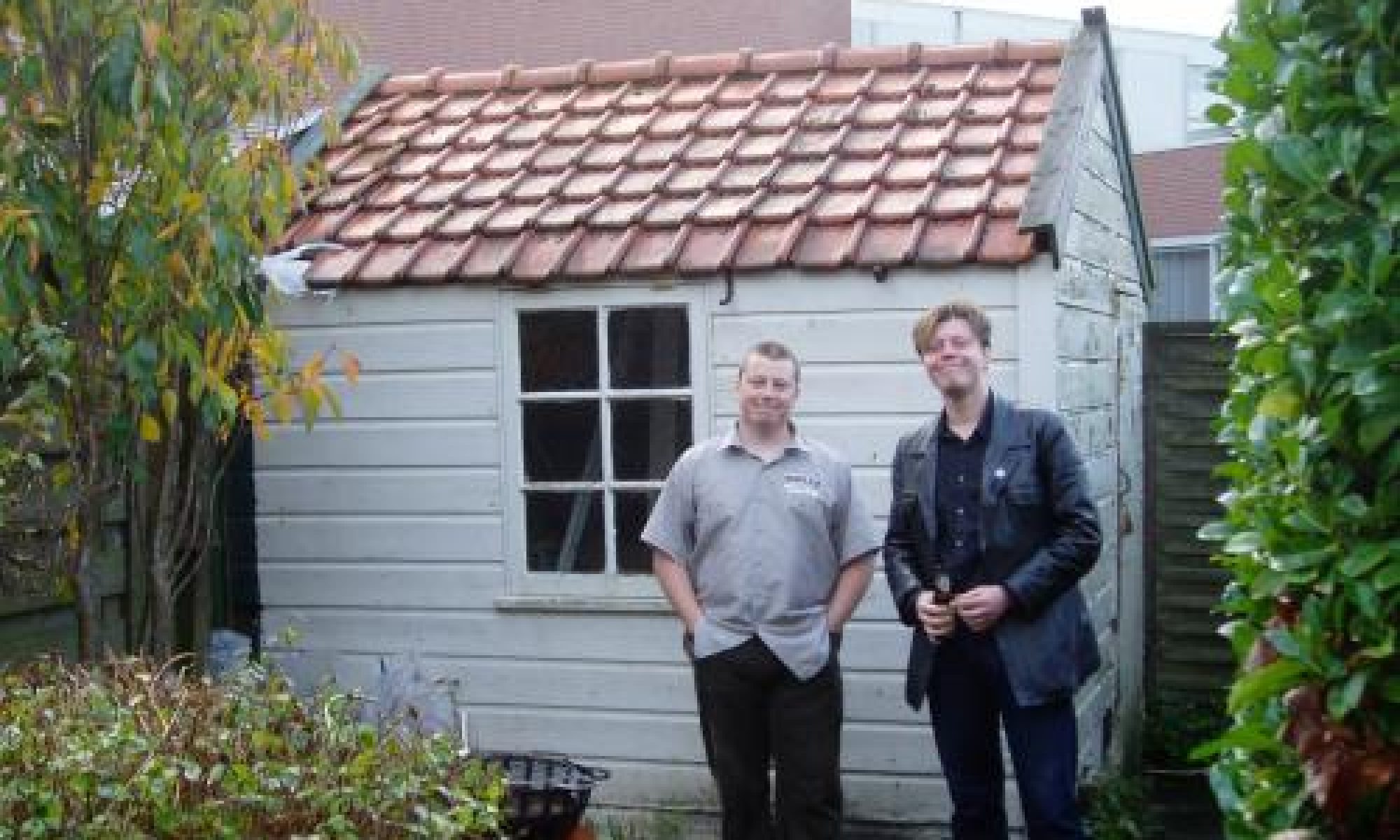The album is also a reminder of how we live in a rather dull world now. The advert for Kia Ora (not the one with the crows) is like a mutant form of dub jazz. And is great, obviously.
The album is also a reminder of how we live in a rather dull world now. The advert for Kia Ora (not the one with the crows) is like a mutant form of dub jazz. And is great, obviously.
Daphne Oram – Oramics
An ambient electronic drone at once ethereal and mysterious. And then chimes, blips and gurgles. Finally these fade away and we hear a very English, very clipped, female voice:
"The Oramics studio is in Kent, in a converted oast house, only 28 miles or so from Piccadilly Circus. I’m Daphne Oram, director of the studio and I’d rather like to introduce to some of very varied sort of soundtracks that are produced at my studio. Here’s a track for a commercial about power tools – pneumatic tools, saws, and spray guns etc. The real sounds of the tools are here electronically treated, and mixed with some rather light-hearted electronic music…"
And she told no lies – for the next minute we hear jaunty electronic pop, complete with pneumatic drills and so on. Welcome to Oramics.
The fact that Daphne Oram’s name is probably/possibly unfamiliar to you is a shame. She began her career at the BBC during the second world war and later became a founder member of the Radiophonic Workshop in 1958. She supplemented her income by writing advertising jingles, such as the one mentioned above for Atlas Copco power tools, but she also wrote them for Lego, Kia Ora and so on. In a typically British fashion we’ve only recently began to appreciate some of our early electronic pioneers. (Another Radiophonic Workshop employee, Delia Derbyshire, is also belatedly receiving her due plaudits.) Quite why we ignore such people I don’t know – is it because their work was in some aspects commercial? Has the spectre of Doctor Who overshadowed all the work of the Radiophonic Workshop members?
I’ve no idea, but for anyone interested in early British elecronica these are two fascinating CDs. For contained here are sounds and samples that have since become commonplace. Some of this music is fifty years old and yet some of it has hardly dated at all.
Lets just take the lengthy track Bird of Parallax as an example. It opens slowly with slightly ominous high-pitched wails that could be treated violins. There is electronic chatter in the background. Basically it’s a sinister soundscape reminiscent at times of Gorecki. And then a funky, squelchy beat emerges, topped off with strange electronic effects. The organ beat is manipulated and becomes encased in static and the other effects begin to overwhelm it. The beat staggers and dies. Then we have the sounds of an urban street – cars and children voices. Horns pip. Then the sounds of the street fade away and another ambient drone takes over. The disquieting effects take over again and then the beat returns, albeit this time it sounds like a North African group has been deposited on the moon. The music gets a bit of a free run before the sound effects intervene once again. We finally finish with the abstract sounds that we began with.
The upshot is this – virtually everything we think of in terms of ‘modern’ electronica can be found here. The use of samples, the manipulation of instruments and voices, the use of distortion – it’s all here. That’s not to say that this record sounds like the Aphex Twin or Squarepusher, or whoever your favourite electronic artist is. No. But you can certainly hear elements of modern electronica – for any modern musician unaware of the work of Oram (and Derbyshire etc.) it must be strange to hear such anticipatory plagiarism. But for those of us who aren’t musicians it is a pure joy to hear such playful (and powerful) experiments.
Not all of it is timeless, however. As with the work of other Radiophonic Workshop pioneers there are moments when you feel you are hearing a 1960s version of the future. It is a future that remains tied into the 1960s but it is evocative none the less, and rarely feels kitsch.
The album is also a reminder of how we live in a rather dull world now. The advert for Kia Ora (not the one with the crows) is like a mutant form of dub jazz. And is great, obviously. The collection, given the kind of work Oram did, is necessarily bitty at times, but it is also consistently fascinating. Here is bold and dramatic music that ranges from the cute and the poppy to more formidable musique concrete compositions.
The title of the album, by the way, refers to the musical machine she created to convert pictures into sound. An inventor and a composer she continued to work until she suffered a stroke in 1994. She retired to a nursing home and died four years ago at the age of 77. She deserves to be better known. The sounds on these two CDs are brimming with energy and spirit and some still sound like the future. Not the future as envisaged forty or fifty years ago – the future as imagined today.
Words: Chris Dawson.
